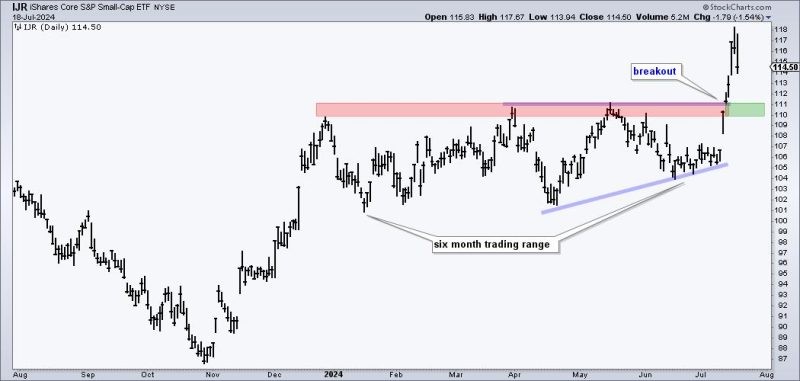In the competitive world of finance, small-cap stocks have recently broken out from the pack and are leading the market. This shift has grabbed the attention of investors and analysts alike, raising questions about what comes next for this growing group of companies. Let’s delve into some key considerations and potential outcomes as small-cap stocks take center stage.
1. **Market Momentum:** Small-cap stocks have been on an upward trajectory, outperforming their large-cap counterparts. This positive momentum can be attributed to a variety of factors, including strong corporate earnings, improving economic conditions, and increased investor risk appetite. As a result, many small-cap stocks have seen significant price appreciation, attracting investors seeking high-growth opportunities.
2. **Volatility and Risk:** While small-cap stocks offer the potential for higher returns, they also come with increased volatility and risk. These companies tend to have smaller market capitalizations and may lack the scale, resources, and market visibility of larger, more established firms. As a result, small caps can be more susceptible to market fluctuations and economic downturns, making them a riskier investment choice for some investors.
3. **Valuation Concerns:** The recent surge in small-cap stocks has raised concerns about valuation levels. Some analysts worry that the rapid price appreciation may have outpaced the underlying fundamentals of these companies, potentially leading to a bubble in the small-cap market. Investors should carefully evaluate the valuation metrics of individual small-cap stocks to ensure they are not overpaying for growth prospects.
4. **Sector Rotation:** The leadership of small-cap stocks may also signal a broader sector rotation within the market. As investors search for new opportunities and diversification, they may be shifting their focus from traditional large-cap stocks to smaller, more nimble companies with greater growth potential. This rotation could have implications for sector performance and market dynamics in the coming months.
5. **Investment Strategies:** For investors looking to capitalize on the small-cap trend, there are a few key strategies to consider. Diversification is essential to mitigate risks associated with individual small-cap stocks. Additionally, active management and thorough research can help identify promising small-cap companies with strong growth prospects and solid fundamentals. Long-term investors may also benefit from holding small-cap stocks as part of a well-balanced portfolio.
In conclusion, the rise of small-cap stocks presents both opportunities and challenges for investors navigating today’s market environment. While the outperformance of small caps is a positive sign for economic growth and market sentiment, caution is warranted due to the inherent risks and uncertainties associated with these companies. By staying informed, conducting thorough research, and adhering to sound investment principles, investors can position themselves to make informed decisions and potentially benefit from the small-cap breakout.

